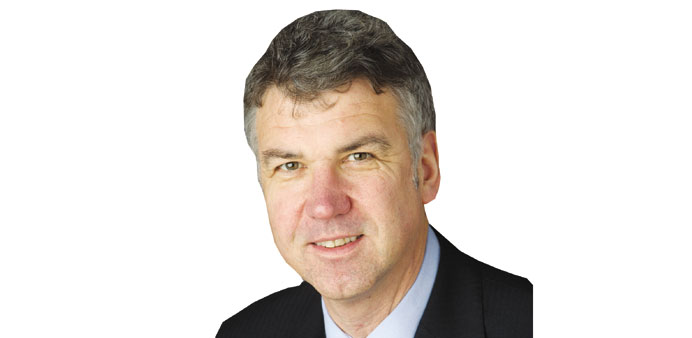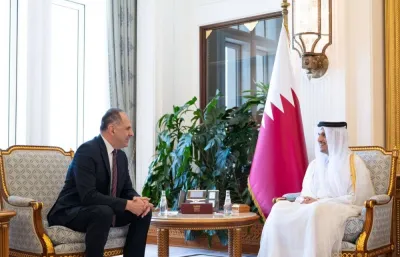The timing of Qatar’s lifting of the moratorium on its North Field is a matter being closely followed by the Oxford Institute for Energy Studies. Howard Rogers, director of the institute’s natural gas research programme, predicts the market for LNG could be quite ‘soft’ in the 2018-2023 window as a result of the large number of LNG projects in Australia, the US, Canada, East Africa and Russia due to come on stream.
“There is quite a lot of potential LNG likely to hit the market in a window which spans 2018-2023. Depending on some big uncertainties on the robustness of US shale gas supply going forward and another huge unknown, namely China’s future LNG requirements, there is potential for quite a soft market in that window,” he said.
Given this scenario, he predicts that Qatar will be looking at the 2023 plus window, which, factoring in the long lead times for development, would imply that a decision on lifting the moratorium would likely be made in 2016-17. He expects RasGas and Qatargas to remain in place as key developers but sees opportunities for “international upstream companies that aren’t yet in Qatar to try and put themselves forward as partners for future development.”
Speaking of Qatar’s policy on developing its extensive gas reserves, Rogers said, “I have to say the North Field and its extension into the Iranian South Pars field probably represents the lowest cost large gas resource as yet undeveloped on the planet. That is particularly the case because you also have the co-production of condensate which has a significant revenue stream that enhances the economics of the whole chain. So from the point of view of the world gas consumer, it would make eminent sense to further develop this resource to provide a reliable, low cost source of LNG. However, from the Qatari perspective, I guess that with such a low population and it already being a very rich country in terms of GDP per capita, the issue is ‘how much more money do we really need?’
Rogers said that there are a wide range of opinions when it comes to assessing how long the world is going to see natural gas as foundation fuel. “There’s a big debate: proponents of renewables will say its days are numbered, but maybe more pragmatic people would say some countries – especially some European countries – might find there is a limit to the affordability of renewables in terms of completely taking over the energy sector. And, therefore, especially with the problems of renewable intermittency, there will always to a role for gas.”
Speaking of the current tense situation regarding Russia and the Ukraine, Rogers said Europe needs to take a realistic view of its relationship with Russia in terms of energy dependency. “It’s an interesting aspiration for Europe to try and reduce its reliance on Russian gas, but from a practical point of view it’s somewhat naive,” he said. He noted that when you look at the European region, including Turkey, Russia provides 150 bcma (billion cubic meters per annum) of gas out of a total demand of 450 bcma-500 bcma. “That is very significant and you can’t move away from that except over a very long time period,” he said.
“Russia has built the Nord Stream pipeline (transporting Russian natural gas from Vyborg in Russia to Greifswald in Germany) and has started to build the South Stream pipeline (transporting Russian natural gas through the Black Sea to Bulgaria and further to Greece, Italy and Austria) which provides a means of avoiding Ukraine and providing a more reliable supply to Europe. But the escalation of political indignation is such that parts of the EEC (European Economic Community) have said they will kill the South Stream, which in practical terms is a little bit like shooting yourself in the foot,” he added.
Rogers noted that Ukraine “has had a terrible record of failing to pay for its gas”, despite significant loans from the International Monetary Fund. “The conditions for such loans were that Ukraine would reform its energy sector, and as far as I know it hasn’t done that,” he said. “It’s a very messy situation and it’s hard to see how it can be resolved other than through someone lending Ukraine more money to pay its gas bill to ensure that gas continues to flow through Ukraine, both in terms of supplying Ukrainian and European customers,” he said.
Asked for his opinion on the potential for developing shale gas reserves in the UK, Rogers said: “I wouldn’t bet the farm on it.” He predicted there could be considerable resistance to large scale developments. “The challenge for the UK is that you need to drill a lot of wells on an ongoing basis to build up a meaningful flow rate of shale gas and the wells decline quite quickly which is the reason why you have to keep drilling. It’s a lot easier in the American mid-West or remote parts of Texas where people are used to seeing drilling rigs all over the place. We are used to seeing tower cranes in our cities, but we are not used to seeing drilling rigs around and so I think this is a big issue in terms of public acceptance, let alone the concerns people rightly or otherwise have about leakage of fracking fluids.”
Rogers added: “It is the flow rate compared to the cost of the well that drives the economics. Until you drill wells and can measure that flow rate it’s all best guessing. We need two to three years of exploration to assess the viability.”
Noting that Qatari LNG supplies to the UK peaked in 2011-12 with the Gulf country adjusting its global supply strategy in accordance with demand for LNG in the Asian markets and post Fukushima nuclear disaster demand from Japan, he expected the UK supply to remain steady. “That growth in LNG import requirements in Asia resulted in LNG being pulled away from Europe and the UK since 2012. That is where we are now in a pretty tight LNG market,” he said.



